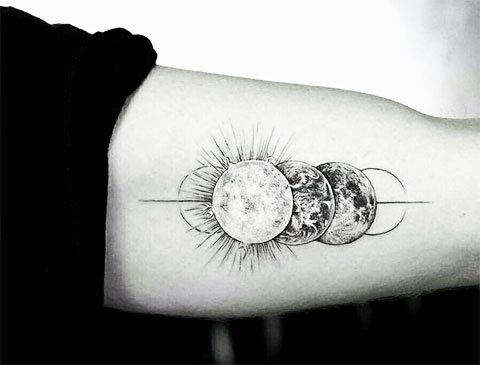
Tattoo of planets
The space theme is very attractive to tattoo lovers. And no wonder: the Cosmos is little explored, beckons by its mystery and beauty, mystery and incomprehensibility. Since ancient times it is also believed that the planets of our solar system influence people.
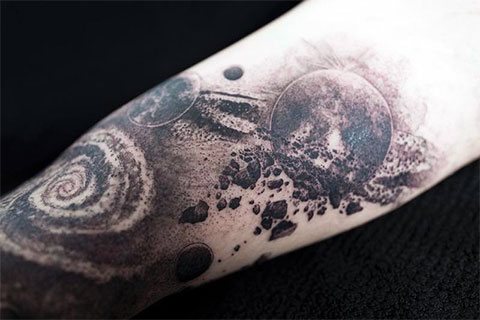

Tattoo of the planets
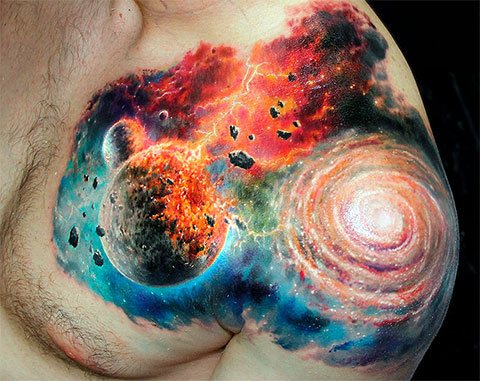

Tattoo of the planet - photo
Each person by date of birth corresponds to its planet, and to make Tattoos in the form of a planet - it means to strengthen the positive influences of this planet on a person, to create harmony and tranquility around him.
Meaning of the Venus tattoo
In the Roman Pantheon, Venus - the goddess of love, beauty, and symbol of triumph and hope - played a special role as the ancestor of all Roman people.
According to legends, Venus (Aphrodite in the myths of ancient Greece) also represented enchantment, lust and fertility. The goddess appeared at all marriage ceremonies and guarded the family values of the spouses. Venus was believed to quell resentments and misunderstandings of the lovers, granting them patience and procreation. The Romans believed that if a man was outwardly beautiful, it was the good Venus herself who had drawn her attention to him. In addition, the goddess of love was a mediator between the divine and human worlds, and in every way protected Romans in war, helped to find true happiness even for promiscuous women, and pointed the way for people to build temples for the worship of the gods.
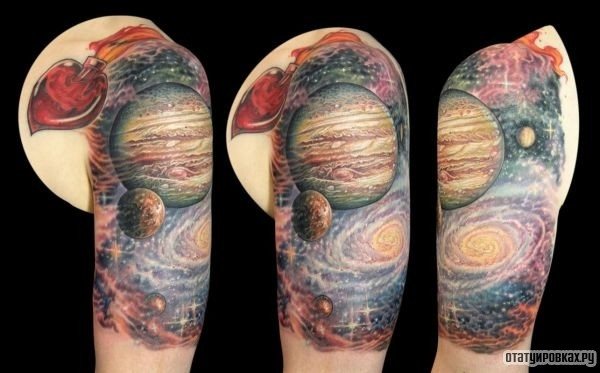

In ancient Rome they definitely knew what the goddess of love and beauty should look like, as Venus is depicted in many writings and architectural structures, and sculptures have also been found with her appearance as a young beauty with a long, lush hair, fair skin, and round face. Venus was everywhere accompanied by the symbols of peace and spring awakening - a hare and a dove.
Venus was, in fact, the very model of a perfect woman: beautiful, independent, strong, wise, and also passionate. The priestesses of Venus were not stingy with tenderness for anyone who came to the temple who wanted it. That is why the passionate Venus, with her maids and paraphernalia, is a purely feminine symbol.
However, as the cult of the goddess declined and with the dawn of ancient Greek culture, Venus became less popular and was soon seen as analogous to the Greek goddess Aphrodite.
The symbolic attribute of Venus, including today, is her mirror, which embodies femininity. Before the formation of Christianity, this mirror was graphically depicted as a magnifying glass. However, when faith in Jesus supplanted all other religions, in order not to associate the Venus mirror with paganism, they began to draw a horizontal stripe on its handle so that the symbol of femininity began to resemble a cross.
The mirror of Venus is the reflection of man's state of mind and means people's ability to love, sympathize with someone, be necessary and close with other people, develop and feel beautiful things.
If the composition in the Venus tattoo is depicted with positive elements, then such a body drawing will mean friendliness, charm, ability to colorfully show their feelings. After all, people are not alien to love also for certain things and phenomena occurring around them.
If there are any negative symbols in a tattoo, then the image means difficulties in mutual understanding with friends and in the sensual sphere, problems in the use of life experience, dissatisfaction with oneself and others.
Modern culture has borrowed much from the ancient Greeks and Romans. This is not only a huge number of words that came into modern languages from antiquity, but also knowledge in mathematics, chemistry, physics, architecture, and many other sciences. By the way, it is to the ancient Greeks and Romans that contemporaries should be grateful for such signs as the mirror of Venus and the spear of Mars, used to denote male and female.
There is a version that the pedestal of Venus did not disappear by accident
The statue's creation is attributed to Alexander of Antioch - he is believed to have carved this masterpiece from stone between 130 and 100 B.C. The statue was found with a plaque pedestal on which the creator's name was embossed. Subsequently, the pedestal mysteriously disappeared.
Perhaps the clue to its disappearance lies in the fact that 19th-century art historians decided that the statue of Venus was the work of the Greek sculptor Praxiteles (it was very similar to his statues). This classified the statue as belonging to the Classical era (480-323 BC), whose creations were much more valued than those of the Hellenistic period. To support this version, even at the cost of misinformation, the pedestal was removed before the sculpture was presented to the king.
There are numerous reconstructions that depict Venus of Milos in various versions with her hands. Be that as it may, Venus' hands were holding something. What?
The symbol of Venus is a mirror.
This sign has been seen by absolutely everyone, and more than once. Modern manufacturers of erotic products and contraception use it quite actively.
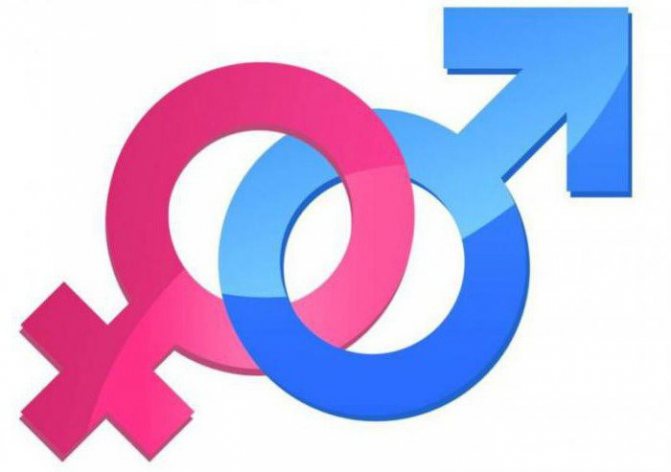

If you open any book about relations between sexes, on one of the illustrations there will be a mirror of Venus. This is a symbol of femininity that appeared in Ancient Greece. Also there is a similar symbol of man's beginning - the spear of Mars.
The history of appearance
So, we have established that the modern symbol of femininity came to us from the distant antiquity, but in other cultures there were also its analogs. In ancient times, female deities were always identified with wisdom, love, wealth, beauty and fertility, without which ancient people considered their lives incomplete. That is why every religion had its own supreme female goddess: Venus, Ishtar, Aphrodite, Astarte and others. Very often their symbols were a circle, signifying prosperity and wholeness, very similar to the mirror of Venus. By the way, the beloved Egyptian ankh is also similar to the symbol of the feminine and is often considered its progenitor.
In ancient Greece, and afterwards in the Roman Empire, the cult of Aphrodite, or Venus, was quite widespread. She, like most supreme goddesses, protected women by giving them beauty, as well as patronizing people in love and pregnant women.
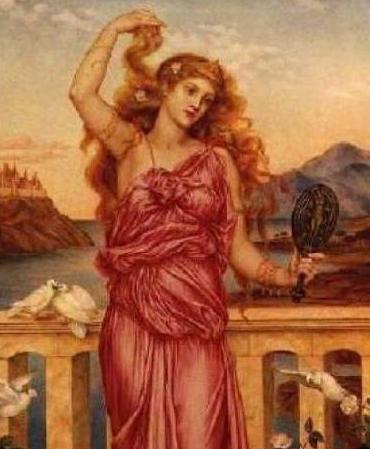

In fact, Venus embodied the ideal woman: beautiful, independent, strong, intelligent, and yet passionate. Her priestesses gave loving caresses to any visitor to the temple who wished. That is why Venus, her acolytes, and the symbol of the passionate goddess were associated with the feminine. With the abolition of the cult of the goddess, however, it became less popular.
This symbol, as well as its male counterpart, became widespread thanks to the scientist Carl Linnaeus, who figured out how to classify representatives of flora and fauna. Faced with the fact that it is necessary somehow to indicate the sex in plants and animals, in 1751 he decided to use the symbols of male and female origin that came from pagan Greece.
History of the discovery
The famous statue was discovered on April 8, 1820, in the ruins of an ancient city on the island of Milo by a farmer named Yorgos Kentrotas, accompanied by a French sailor, Olivier Coutier. After changing several owners while trying to take it out of the country, the statue eventually found its way to the French ambassador in Istanbul, the Marquis de Rivière. It was the Marquis who presented the Venus to the French King Louis XVIII, who in turn gave the statue to the Louvre, where it remains to this day.
The sculpture was found together with the hands, or rather fragments of hands, which they attempted to reconstruct, but the hands turned out to be "too crude and unsophisticated". Modern art historians believe that this does not mean at all that the hands did not belong to Venus, just that they were badly damaged. When the statue was transported to Paris in 1820, both the hands and the original pedestal were lost.
The various meanings of the symbol
In addition to acting as a symbol of the ancient goddess and the planet named after her, as well as a sign of womanhood, the mirror of Venus was used in the Middle Ages by alchemists to denote the chemical element Cuprum, now known to all as copper. Strange as it may seem, but the name of this metal is also associated with Venus.
In ancient times, mirrors were made of copper. And the largest deposit and the largest supplier of this metal at that time was Cyprus, the place where, according to legends, the passionate goddess was born and where the center of her cult was. Therefore, not only the planet, but also the chemical element was named after Venus.
The history of Venus of Milos
The Frenchman, accompanied by a Greek escort, found the beautiful statue - generally well-preserved, but split in half. The Turkish authorities, after grueling bargaining, did allow the statue to be removed from the island, but later, after realizing what value they had lost, they gave the Greeks involved in the search and transportation an exemplary punishment. In the process of the latter, the hands were lost. In France, the Venus was presented to Louis XVIII and soon transferred to the Louvre, where it remains to this day.
Modern variations of the symbol
Several millennia have passed since the symbol of femininity appeared. Over the years, it has evolved.
In the twentieth century, this sign also underwent numerous changes. With the active spread of feminism a slightly modified mirror of Venus (photo below) became a symbol of the struggle of women around the world for equal rights with men. So the traditional image of a mirror with a handle-cross was supplemented by a fist in the center of the circle.
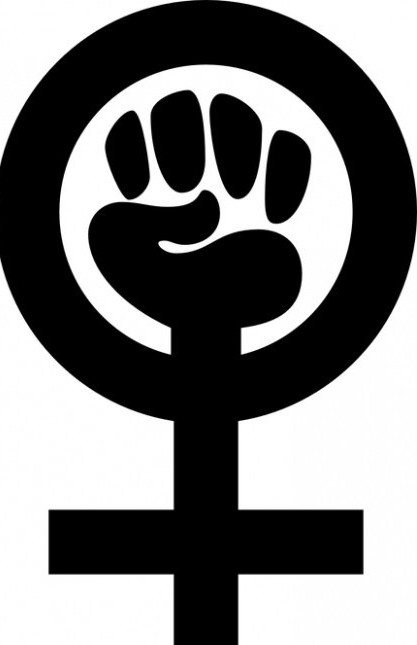

Since the sexual revolution, people have been able to openly form relationships with members of their own sex. In addition, they were now able, with the help of modern medical advances, to change the sex given by nature to another.
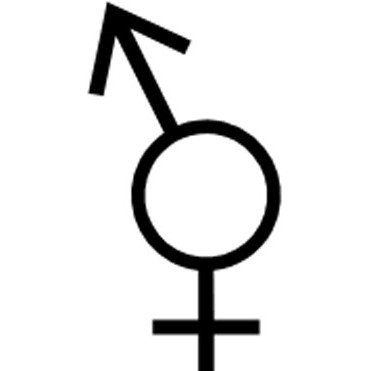

A modified sign combining the mirror of Venus and the spear of Mars is used to designate such individuals. In addition, there is another sign, also created on the basis of the mentioned images, only here there is also a third element, symbolizing transformation.
Among other things, a slightly modified symbol of femininity is used to indicate hermaphroditism (the presence of features of both sexes in one person, animal or plant). Interestingly, the planet named in honor of another ancient deity - Mercury - is denoted by the same symbol.
2.Venus of Medicea (aka Venus de Medici) and Venus of Cnidus.
Everyone has heard the name of the great ancient Greek Athenian sculptor Praxiteles. However, he had a father and even a son, both named Cephisodotus. Praxiteles' father and teacher was called Kefisodotus the Elder; his son and student was called Kefisodotus the Younger.
Praxiteles himself (about 390-330 BC) was the first to create the Venus of Knids, the naked goddess of love, although he became famous primarily for his examples of male sculpture. He invited the Athenian painter Nicius to paint his works.
His son, in collaboration with another sculptor (names can't be recalled anyway), later sculpted the Venus of Medicea, now completely nude.
Praxiteles. Venus of Cnidus. Very circa 360 BC.
Pictured is the best ancient Roman copy, the Vatican copy. We will no longer see the original. The original was tinted with wax paints in delicate and warm tones by the artist Nicius. The restorers added many body parts to the copy.
In another book, also as a Vatican copy, the same statue is shown, but covered with a cloth up to the waist:
Variant of Venus of Cnidus with drapery in right hand.
Apparently, the missing bottom of the found Roman copy, restorers made in different variants.
There are two stories about the Venus of Knids. The first is that Praxiteles was posed by the famous Greek hetaera Frina, about whom, in turn, stories are also composed. This seems plausible, since the statue became famous among the ancient Greeks because of the beauty of the "Venus of Cnidus," who, it is said, was even fallen in love with, and not at all platonically. The second - that the variant of the naked goddess was rejected by the inhabitants of Kos, but this variant was chosen by the inhabitants of the island of Knida, hence she became "Knida".
For this note is more important "Venus of Medicea", as the creation of Canova's "Venus of Italy" is connected with it (see item 3 of this note).
Venus of Medicea (Medici). Cephisodotus the Younger (son of Praxiteles). The photo is an ancient Roman copy of the 1st century BC. The stitches from the later attached body parts are clearly visible in the photo
The pose of "Venus of Medicea" (the son) clearly goes back to "Venus of Knids" (the father). If the cloth is in the goddess' hand her gesture is motivated, if the cloth is removed, it is perceived as a gesture of "false modesty" (see point 1.2), about which one of Canova's contemporaries later wrote that Canova made his "Venus" without mistakes "Venus of Medicea", "whose pose reminds a coquette and even a maid of sale". Most viewers liked this statue very much and still do. A distinctive feature of the "Venus de Medici" is a support in the form of a dolphin (an attribute of Aphrodite).
Tattoo of planets: general meaning
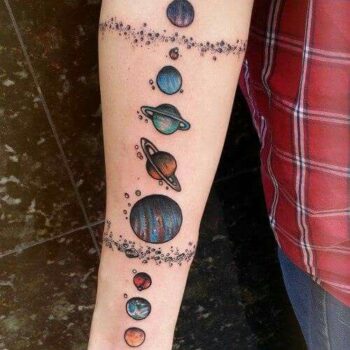

The owners of tattoos with planets are extraordinary personalities, prone to constructing the concept of creating the world. Such people attach weighty importance to the meaning of life and stay on earth. Tattoo with a planet encapsulates the philosophical idea of the deep interconnection of man with all elements of the universe.
The image of the planet represents the cycle of energy in the universe, the duality of the nature of things and the return to the point of reference. Everything in the world is built on the principle of balance. Negative energy is opposed to positive energy.
There are such pairs as good - evil, love - hate, life - death, pride - shame. The merging of these dual energies leads to nullification, a return to the original position. The energy is neutralized and no longer has any coloring. It is from this energy that everything is created. Tattoo with the planets symbolizes the structure of the world, the infinity of life and the principle of existence.
A wrist drawing of the Sun represents an endless source of life energy. This tattoo causes optimistic, cheerful people. They trust the universe and draw strength from life itself.
Sun can symbolize the hot temperament, a powerful energy and strong spirit. The sun can symbolize a hot temperament, a powerful energy and a strong spirit. Sun is a strong talisman that helps to preserve health and youth.
Tattoo with the Moon symbolizes peace and faith in the fulfillment of desires. This planet is the most mysterious of all. It is fascinating in its depth and penetration. The owners of the tattoo with the moon are silent observers contemplating the silence of the night world.
Meaning of tattoos for men and girls
The tattoo with the planets is universal. It has the same meaning for both sexes. Among girls, the most common tattoo can be found with Venus - a symbol of love and beauty. Such a body image reflects the soft female nature, wisdom and inner harmony. Picture printed on the hands, shoulders, wrists and ankles.
Among men there are often tattoos with Mars. This planet represents masculinity and strong character. Young men apply such an image to emphasize such qualities as courage, endurance and boldness.
Saturn tattoo: meaning
The planet was named after the ancient Roman god of agriculture Saturn. The Romans believed that it was thanks to him that they learned to cultivate the land, grow fruit and create comfortable conditions for life. There were even special days of veneration for this god, the Saturnalia. On these feasts even slaves received liberation.
Saturn is a rather controversial planet. A tattoo with this cosmic object helps its owner to maintain discipline and increases the ability to learn. The action of this planet is aimed at raising the level of human spirituality. At the same time, Saturn is an opponent of materialism, so it is able to "silence" the monetary sphere of a person. This tattoo should be applied with caution.
The Shield of Perseus
Libra is the seventh sign of the zodiac and the only one representing an inanimate object. The name was given to it by Roman astronomers at the beginning of our era. One interpretation of the name of this zodiacal sign is associated with the day of the autumnal equinox, which was considered as the point of "death" of Nature, and which, over time, due to imperfect calculations of the calendar has moved to the constellation of Virgo.
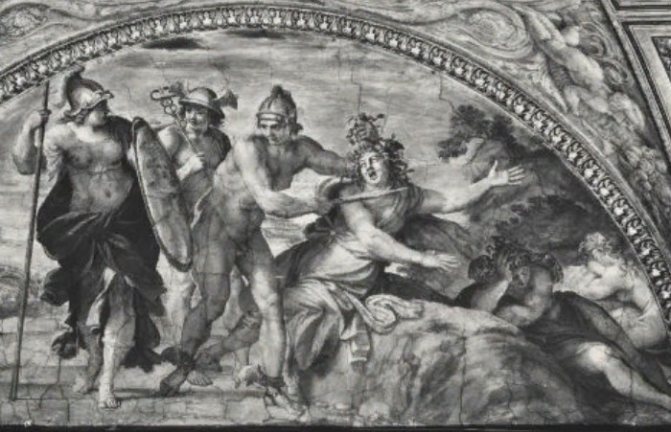

Perseus kills the gorgon Medusa. Fragment of a fresco by A. Carracci
Tattoo of Venus: meaning
Venus is the goddess of love and fertility. The planet Venus is named after her. Tattoo with her image helps to harmonize the love sphere of a person. People who do not have a couple can apply such a tattoo to attract the other half in their lives.
For married people, the image is a talisman of marital relations. Tattoo with Venus helps to strengthen the marriage union, maintain love and mutual understanding in the family throughout life. Such a tattoo can awaken passion between partners and enhance mutual attraction.
"Venus of Milos."
It would be illogical to bypass this goddess, as she, too, goes back in idea to the "Cnidian", that is, to the original source, Praxiteles.
Venus of Milos. Found in the early 19th century on the island of Milos (then Turkey). About 100 B.C. Louvre.
Kind of like when she was found she had both hands and a pedestal with the sculptor's name inscribed on it. And while it was being "dragged" back and forth and while it was floating to its new home, it lost both.
Let's not be sad. We have seen what problems the "naughty hands" of antique Venus can create. I have a thought that this is why we like the "Venus of Milos" better, since it doesn't have hands. Like the "Belvedere torso," which has another "advantage": also no legs. No kidding.
Tattoo a parade of planets: meaning
The planets, put in a row, depict versatile people who have their own view of the world. The tattoo represents the multistage formation of the worldview, the spiritual development of a person and the variety of ways to perceive reality.
The owners of the parade of planets tattoo have a flexible way of thinking. They are very communicative and are able to look at the world from different angles. These people are excellent psychologists, able to stand in the place of another person, assessing the situation from his point of view.
Tattoo a parade of planets represents the diversity of the universe. Because each of the cosmic objects has its own meaning, the tattoo with the image of all the planets shows that a person can take advantage of the qualities of a particular planet when he needs it.











